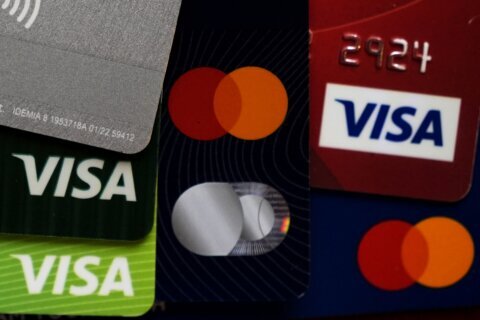Organizing your finances can seem like a huge commitment — especially when you’re juggling multiple priorities, like saving, investing and paying down debt. But managing your finances doesn’t have to be a full-time job, especially if you employ some easy-to-use tools to help you streamline your financial life. From keeping track of bill payments and organizing receipts for tax time to saving for a rainy day, these are some of Wise Bread editors’ favorite tools for staying organized, based on research and experience.
[See: 10 Financial New Year’s Resolutions.]
1. The best tool for organizing receipts: Shoeboxed
Tired of using envelopes and paper clips to organize your receipts? Then Shoeboxed may be right up your alley. This ingenious app allows you to store and organize pictures of your receipts and even categorizes the expenses. Better still, the scanned receipt images are accepted by the IRS at tax time, allowing you to maximize your deductions — and minimize your tax-time paperwork.
You can also auto-archive receipts from Gmail, track mileage data and manage expense reports efficiently. Be aware that some premium functionality carries a price tag. Still, Shoeboxed may be among the most efficient ways to track your expenses and reduce paper clutter.
[See: 9 Red Flags That Could Trigger a Tax Audit.]
2. The best tool for managing store loyalty cards: Key Ring
If you’re using store loyalty cards, you’ve already taken a great step toward improving your finances. Go one step further by using an app such as Key Ring to store all of your loyalty cards in one place and never miss a savings opportunity from your favorite retailer. Of course, you’ll free your wallet from the burden of countless loyalty cards. Plus, you’ll be able to receive coupons from your favorite retailers on the app, make shopping lists and keep track of sales. Now that’s streamlining.
3. The best tool for splitting expenses: Buxfer
Many of our top tools have multiple functions, and Buxfer is no exception, but where this app really excels is in its ability to split your shared expenses and even reimburse others directly. For roommates, family members or significant others who frequently share costs, it’s a handy way of splitting expenses neatly. Buxfer also allows you to create budgets and bill reminders, as well as import financial data to see all of your accounts in one place.
4. The best tool for retirement planning: SSA.gov
Sure, there are lots of fancy new investing and retirement-planning tools that make the Social Security Administration’s website seem downright old-fashioned. Still, when it comes down to it, the SSA website should be a cornerstone of most people’s retirement planning, because benefits like Social Security, Medicare and Social Security Disability Insurance, or SSDI, are staples of many retirees’ portfolios. Plus, the SSA website is well-designed, with tools to help you apply for benefits, calculate your expected benefit amount and more. Even if you have a pension, sizable 401(k) or other expected retirement income, the SSA website is an essential first step in planning for your retirement needs.
5. The best tool for managing student loan debt: Student Loan Hero
Got student loans? We feel your pain — and so does Student Loan Hero, a site designed to help you repay your debt efficiently. Student Loan Hero’s clean interface allows you to see all your loans in one place, so you can easily track your total repayment efforts. The site also includes a variety of useful calculators that allow you to crunch the numbers on everything from student loan interest deductions to loan prepayment. Plus, the site’s personalized repayment plan takes into account your personal financial situation to create repayment suggestions, including loan consolidation or refinancing options.
[See: How to Live on $13,000 a Year.]
6. The best tool for automatic investing: Acorns
Automatic savings tools have become all the rage in recent years, but even better are tools that allow you to invest effortlessly, and the best among these might just be Acorns. This smart app allows you to link credit or debit cards you use for daily expenses, and automatically rounds up your purchases to the nearest dollar, transferring the change into an investment account. Your funds are then invested into low-cost ETFs, and voila! Watch your spare change grow. While Acorns is best for novice investors, it’s helpful even for seasoned pros, simply because it’s hard to go wrong with low-fee ETFs, and every cent invested adds up over time.
7. The best tool for bill payments: Mint
The granddaddy of money-management tools is good at a lot of things, but it’s especially helpful at organizing bill payments. Since Mint consolidates all of your financial information, you’re able to see not only when your bills are due, but how much cash or credit you have available, as well as how much debt you owe. This complete financial picture enables you to manage your overall finances more effectively. Of course, Mint also allows you to set bill-pay reminders and even pay bills online via your PC or mobile device. (This author was managing editor of the Mint blog from 2011 to 2012.)
Keeping your finances organized is a challenge, no doubt — but one that can be made less challenging using these handy tools. And given that most of these tools are free (or very low cost), your efforts should pay off handsomely.
More from U.S. News
10 Money-Saving Websites to Check Before Shopping
The 7 Best Tools for Organizing Your Financial Life originally appeared on usnews.com







